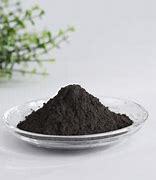**Boron’s Secret Identity: What’s Its Oxidation Number?**
(What Is The Oxidation Number Of Boron)
Let’s talk about boron. You might know it as that element sitting quietly in the periodic table, sandwiched between beryllium and carbon. It doesn’t grab headlines like oxygen or gold. But boron has a hidden superpower—its oxidation number. If chemistry were a mystery novel, boron’s oxidation state would be the twist you never saw coming.
First, what’s an oxidation number? Think of it like a scorecard for atoms. It tells you how many electrons an atom gains, loses, or shares in a chemical relationship. Positive numbers mean it loses electrons. Negative numbers mean it gains them. Zero? That’s for lone wolves like pure metals, playing solo.
Now, boron. Its atomic number is 5. That means five protons in its nucleus and five electrons buzzing around. To hit its happiest state, boron wants to mimic neon, the noble gas next door. Neon has eight electrons. Boron needs three more. So, it ditches three electrons to lighten its load. This leaves it with a +3 charge. In most cases, boron’s oxidation number is +3.
Take boric acid, a common boron compound. Here, boron teams up with hydrogen and oxygen. Boron gives up three electrons. Each hydrogen takes one, and oxygen grabs the rest. The result? Boron sits at +3. Same with boron trifluoride. Boron shares (or loses) three electrons to three fluorine atoms. Again, +3.
But chemistry loves exceptions. Boron sometimes breaks its own rules. In rare compounds like boron suboxide, boron’s oxidation number drops. Here, it might show +1 or +2. These cases are weird, though. They’re like finding a unicorn in a horse stable—possible, but don’t bet on it.
Why does this matter? Knowing boron’s oxidation number helps predict how it behaves. In industries, boron’s +3 state is key for making heat-resistant glass, ceramics, or even rocket fuel. It bonds easily with oxygen, creating sturdy structures. Without that +3, your smartphone screen might crack under pressure.
Scientists also care. Boron’s oxidation state affects reactions in labs. Mix it with metals? You get strong, lightweight alloys. Use it in organic chemistry? It helps build complex molecules. Every time, that +3 is the silent partner making things work.
Let’s not forget nature. Boron cycles through soil and water, often as borate minerals. These rely on its +3 state to dissolve, travel, and nourish plants. Without boron’s oxidation number, crops like almonds or grapes might struggle.
But here’s a fun twist: boron doesn’t always play fair. In some high-energy reactions, it can briefly flirt with other oxidation states. These moments are fleeting, like a shooting star. They remind us that even the most predictable elements have a wild side.
(What Is The Oxidation Number Of Boron)
So, next time you see boron in a formula, remember its +3 badge. It’s not just a number. It’s a clue to how boron shapes everything from kitchenware to space tech. And if you stumble on a weird boron compound with a different charge? Enjoy the mystery. After all, chemistry’s full of plot twists.
Inquiry us
if you want to want to know more, please feel free to contact us. (nanotrun@yahoo.com)




